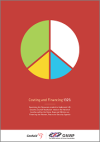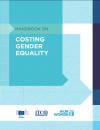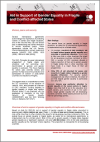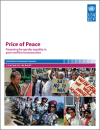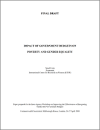FOUND 16
Examining the resources needed to implement Security Council Resolution 1325 at national level as well as the gains, gaps and glitches of financing the women peace and security agenda. Over the last decade the policy environment on women, peace and security has gained significant momentum.
Paper discussing the definition and measurement of Sustainable Development Goal (SDG) Indicator 5.c.1. (reclassified to Tier II) and comparing Indicator 5.c.1 with other SDG fiscal indicators.
Using country-level data, the paper estimates the costs of interventions aimed at promoting gender equality and women's empowerment in Bangladesh, Cambodia, Ghana, Tanzania, and Uganda. It then uses these estimates to calculate the costs of such interventions in other low-income countries.
The Handbook is a comprehensive, step-by-step guide to costing gender equality priorities.
The present study is a contribution to mark the 10th anniversary of the adoption of UNSCR 1325, and provides an overview of DAC members' funding targeted to gender equality in fragile and conflict-affected states.
The main research question of this study To what extent do post-conflict reconstruction initiatives allocate resources to promote gender equality, address women's needs and involve women in decision-making around strategies and related resource allocations?
Since the start of the COVID-19 pandemic, almost USD 16 trillion has been pumped into the global economy, and governments are now rolling out second and third ph
This paper provides guidance on how to make Public Finance Management (PFM) reforms gender responsive. It presents an overview of PFM reforms and explains how and why they are important to the achievement of gender equality outcomes.
In this paper, Simel Esim (2000) focuses on expenditure and revenue instruments of fiscal policy as strategic entry points for engendering macroeconomics. The paper also includes a discussion of the potential implications of monetary policy and overall fiscal stance on poverty and gender equality.
This paper by Simel Esim (2000) explores the revenue side of gender budgeting. Esim also discusses policies and suggests strategies for gender-sensitive budgeting.
